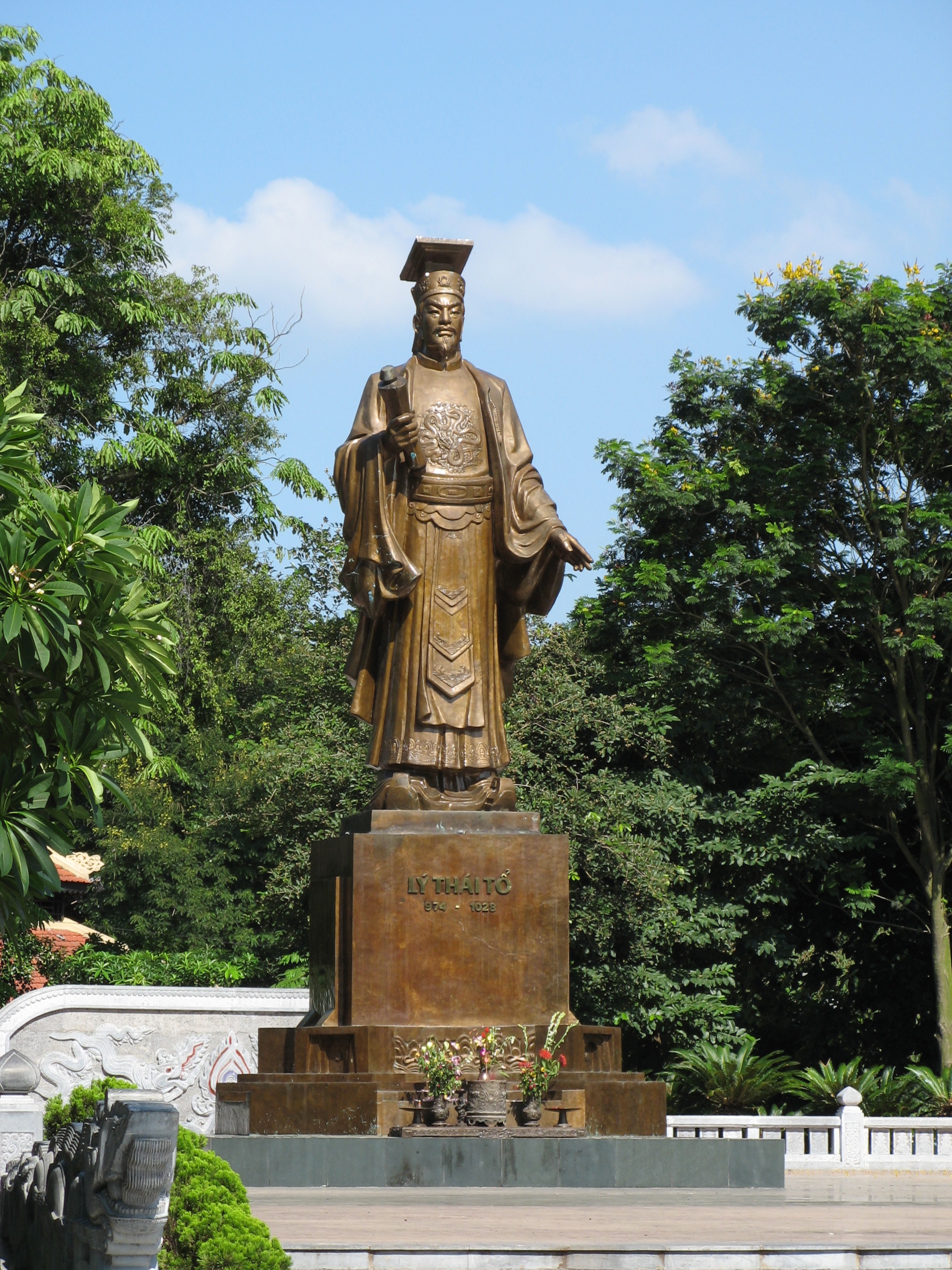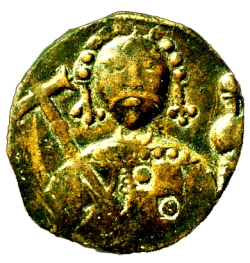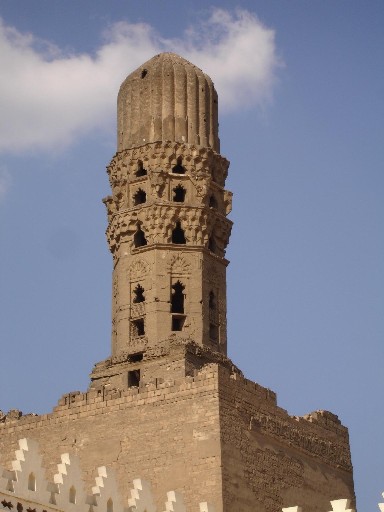|
St. Luke's Day
Events Pre-1600 * 33 – Heartbroken by the deaths of her sons Nero and Drusus, and banished to the island of Pandateria by Tiberius, Agrippina the Elder dies of self-inflicted starvation. * 320 – Pappus of Alexandria, Greek philosopher, observes an eclipse of the Sun and writes a commentary on ''The Great Astronomer'' (''Almagest''). * 614 – King Chlothar II promulgates the Edict of Paris (''Edictum Chlotacharii''), a sort of Frankish Magna Carta that defends the rights of the Frankish nobles while it excludes Jews from all civil employment in the Frankish Kingdom. * 629 – Dagobert I is crowned King of the Franks. *1009 – The Church of the Holy Sepulchre, a Christian church in Jerusalem, is completely destroyed by the Fatimid caliph Al-Hakim bi-Amr Allah, who hacks the Church's foundations down to bedrock. *1016 – The Danes defeat the English in the Battle of Assandun. *1081 – The Normans defeat the Byzantine Empire in the Battle of Dy ... [...More Info...] [...Related Items...] OR: [Wikipedia] [Google] [Baidu] |
AD 33
AD 33 ( XXXIII) was a common year starting on Thursday (link will display the full calendar) of the Julian calendar. At the time, it was known in the Roman world as the Year of the Consulship of Ocella and Sulla (or, less frequently, year 786 ''Ab urbe condita''). The denomination AD 33 for this year has been used since the early medieval period, when the Anno Domini calendar era became the prevalent method in the world for naming years. Events By date *April 3 – According to Colin Humphreys's account, Jesus of Nazareth's Last Supper takes place. By place Roman Empire * Emperor Tiberius founds a credit bank in Rome. * A financial crisis hits Rome, due to poorly chosen fiscal policies. Land values plummet, and credit is increased. These actions lead to a lack of money, a crisis of confidence, and much land speculation. The primary victims are senators, knights and the wealthy. Many aristocratic families are ruined. China * Although the usurpation of Wang Mang and t ... [...More Info...] [...Related Items...] OR: [Wikipedia] [Google] [Baidu] |
1009
Year 1009 ( MIX) was a common year starting on Saturday of the Julian calendar. Events By place Europe * February 14 or March 9 – The first known mention is made of the name of Lithuania, in connection with the murder of Bruno of Querfurt. He is beheaded and his 18 companions are hanged the same day during a mission among the Prussians in the Baltic region. * May 9 – Lombard Revolt: Lombard forces led by Melus, an Italian nobleman, revolt in Bari against the Catepanate of Italy (a province of the Byzantine Empire). He and his brother-in-law Dattus (or Datto) mobilise a large army and invade southern Italy. * November 1 – Berber forces led by Sulayman ibn al-Hakam defeat the Umayyad caliph Muhammad II in the battle of Alcolea. He enters the city of Córdoba, which is sacked by Berbers and Castillans. Sulayman is elected as caliph of the Caliphate of Córdoba. * Doge Pietro II Orseolo dies after an 18-year reign in which he has started the exp ... [...More Info...] [...Related Items...] OR: [Wikipedia] [Google] [Baidu] |
Battle Of Dyrrhachium (1081)
The Battle of Dyrrhachium took place on October 18, 1081 between the Byzantine Empire, led by the Emperor Alexios I Komnenos (r. 1081–1118), and the Normans of southern Italy under Robert Guiscard, Duke of Apulia and Calabria. The battle was fought outside the city of Dyrrhachium (present-day Durrës in Albania), the major Byzantine stronghold in the western Balkans, and ended in a Norman victory. Following the Norman conquest of Byzantine Italy and Saracen Sicily, the Byzantine emperor, Michael VII Doukas (r. 1071–1078), betrothed his son to Robert Guiscard's daughter. When Michael was deposed, Robert took this as an excuse to invade the Byzantine Empire in 1081. His army laid siege to Dyrrhachium, but his fleet was defeated by the Venetians. On October 18, the Normans engaged a Byzantine army under Alexios I Komnenos outside Dyrrhachium. The battle began with the Byzantine right wing routing the Norman left wing, which broke and fled. Varangian mercenaries joined in t ... [...More Info...] [...Related Items...] OR: [Wikipedia] [Google] [Baidu] |
Byzantine Empire
The Byzantine Empire, also referred to as the Eastern Roman Empire or Byzantium, was the continuation of the Roman Empire primarily in its eastern provinces during Late Antiquity and the Middle Ages, when its capital city was Constantinople. It survived the fragmentation and fall of the Western Roman Empire in the 5th century AD and continued to exist for an additional thousand years until the fall of Constantinople to the Ottoman Empire in 1453. During most of its existence, the empire remained the most powerful economic, cultural, and military force in Europe. The terms "Byzantine Empire" and "Eastern Roman Empire" were coined after the end of the realm; its citizens continued to refer to their empire as the Roman Empire, and to themselves as Romans—a term which Greeks continued to use for themselves into Ottoman times. Although the Roman state continued and its traditions were maintained, modern historians prefer to differentiate the Byzantine Empire from Ancient Rome ... [...More Info...] [...Related Items...] OR: [Wikipedia] [Google] [Baidu] |
Normans
The Normans (Norman language, Norman: ''Normaunds''; french: Normands; la, Nortmanni/Normanni) were a population arising in the medieval Duchy of Normandy from the intermingling between Norsemen, Norse Viking settlers and indigenous West Francia, West Franks and Gallo-Roman culture, Gallo-Romans. The term is also used to denote emigrants from the duchy who conquered other territories such as England and Sicily. The Norse settlements in West Francia followed a series of raids on the French northern coast mainly from Denmark, although some also sailed from Norway and Sweden. These settlements were finally legitimized when Rollo, a Scandinavian Viking leader, agreed to swear fealty to Charles the Simple, King Charles III of West Francia following the Siege of Chartres (911), siege of Chartres in 911. The intermingling in Normandy produced an Ethnic group, ethnic and cultural "Norman" identity in the first half of the 10th century, an identity which continued to evolve over the ce ... [...More Info...] [...Related Items...] OR: [Wikipedia] [Google] [Baidu] |
1081
Year 1081 ( MLXXXI) was a common year starting on Friday (link will display the full calendar) of the Julian calendar. Events By place Byzantine Empire * April 1 – Emperor Nikephoros III is forced to abdicate the throne, and retires to the Peribleptos monastery. He is succeeded by Alexios I Komnenos, who is crowned on April 5, as ruler of the Byzantine Empire. His brother-in-law Nikephoros Melissenos supports Alexios as new emperor, in exchange for the title of ''Caesar'' (co-emperor), and is appointed as commander of the Byzantine armies in the West. * May – A Norman fleet of 150 ships (including 60 horse transports), led by Duke Robert Guiscard, sets off towards the Dalmatian coast. An army of 15,000 men (including about 1,300 Norman knights) sails to the city of Avalona (modern Albania); they are joined by several ships from Ragusa, a republic in the Balkans who are enemies of the Byzantines. * October 18 – Battle of Dyrrhachium: After ta ... [...More Info...] [...Related Items...] OR: [Wikipedia] [Google] [Baidu] |
Battle Of Assandun
The Battle of Assandun (or Essendune) was fought between Danish and English armies on 18 October 1016. There is disagreement whether Assandun may be Ashdon near Saffron Walden in north Essex, England, or, as long supposed and better evidenced, Ashingdon near Rochford in south-east Essex. It ended in victory for the Danes, led by King Cnut, who triumphed over the English army led by King Edmund Ironside. The battle was the conclusion to the Danish conquest of England. Prelude On April 23, 1016, King Æthelred the Unready died from an illness that he had been suffering from since the previous year. Two opposing assemblies gathered to name his successor; an assembly of London citizens declared Edmund king and the larger Witan at Southampton declared Cnut as king. During the autumn of 1016, King Edmund raised an army consisting of West-Saxon troops as well as men from Southern England to defeat a Danish force led by King Cnut that had sailed across the Thames into Essex. Battle On ... [...More Info...] [...Related Items...] OR: [Wikipedia] [Google] [Baidu] |
England
England is a country that is part of the United Kingdom. It shares land borders with Wales to its west and Scotland to its north. The Irish Sea lies northwest and the Celtic Sea to the southwest. It is separated from continental Europe by the North Sea to the east and the English Channel to the south. The country covers five-eighths of the island of Great Britain, which lies in the North Atlantic, and includes over 100 smaller islands, such as the Isles of Scilly and the Isle of Wight. The area now called England was first inhabited by modern humans during the Upper Paleolithic period, but takes its name from the Angles, a Germanic tribe deriving its name from the Anglia peninsula, who settled during the 5th and 6th centuries. England became a unified state in the 10th century and has had a significant cultural and legal impact on the wider world since the Age of Discovery, which began during the 15th century. The English language, the Anglican Church, and Engli ... [...More Info...] [...Related Items...] OR: [Wikipedia] [Google] [Baidu] |
Danes
Danes ( da, danskere, ) are a North Germanic ethnic group and nationality native to Denmark and a modern nation identified with the country of Denmark. This connection may be ancestral, legal, historical, or cultural. Danes generally regard themselves as a nationality and reserve the word "ethnic" for the description of recent immigrants, sometimes referred to as "new Danes". The contemporary Danish national identity is based on the idea of "Danishness", which is founded on principles formed through historical cultural connections and is typically not based on racial heritage. History Early history Denmark has been inhabited by various Germanic peoples since ancient times, including the Angles, Cimbri, Jutes, Herules, Teutones and others. The first mentions of " Danes" are recorded in the mid-6th century by historians Procopius ( el, δάνοι) and Jordanes (''danī''), who both refer to a tribe related to the Suetidi inhabiting the peninsula of Jutland, the province of Sc ... [...More Info...] [...Related Items...] OR: [Wikipedia] [Google] [Baidu] |
1016
Year 1016 ( MXVI) was a leap year starting on Sunday (link will display the full calendar) of the Julian calendar. Events By place Europe * March 25 – Battle of Nesjar (off the coast of Norway): Olaf Haraldsson is victorious over former co-regent Sweyn Haakonsson, confirming his status as king of Norway. * April 23 – Æthelred the Unready, king of England, dies after a 38-year reign. He is succeeded by his son Edmund II "Ironside". * Summer – Battle of Brentford (near London): Edmund II defeats the Danes under King Cnut the Great. * July 6 – Battle of Pontlevoy: French forces of Fulk III and Herbert I defeat Odo II which determines the balance of power in the Loire Valley. * October 18 – Battle of Assandun: Cnut the Great defeats Edmund II, leaving the latter as king of Wessex. * November 30 – Edmund II dies and Cnut the Great takes control of the whole of the Kingdom of England. * The Pisan and the Genoese republics launch ... [...More Info...] [...Related Items...] OR: [Wikipedia] [Google] [Baidu] |
Bedrock
In geology, bedrock is solid Rock (geology), rock that lies under loose material (regolith) within the crust (geology), crust of Earth or another terrestrial planet. Definition Bedrock is the solid rock that underlies looser surface material. An exposed portion of bedrock is often called an outcrop. The various kinds of broken and weathered rock material, such as soil and subsoil, that may overlie the bedrock are known as regolith. Engineering geology The surface of the bedrock beneath the soil cover (regolith) is also known as ''rockhead'' in engineering geology, and its identification by digging, drilling or geophysics, geophysical methods is an important task in most civil engineering projects. Superficial deposition (geology), deposits can be very thick, such that the bedrock lies hundreds of meters below the surface. Weathering of bedrock Exposed bedrock experiences weathering, which may be physical or chemical, and which alters the structure of the rock to leave ... [...More Info...] [...Related Items...] OR: [Wikipedia] [Google] [Baidu] |
Al-Hakim Bi-Amr Allah
Abū ʿAlī Manṣūr (13 August 985 – 13 February 1021), better known by his regnal name al-Ḥākim bi-Amr Allāh ( ar, الحاكم بأمر الله, lit=The Ruler by the Order of God), was the sixth Fatimid caliph and 16th Ismaili imam (996–1021). Al-Hakim is an important figure in a number of Shia Ismaili sects, such as the world's 15 million Nizaris and 1–2 million Musta'lis, in addition to the 2 million Druze of the Levant. (''Which page?'') Histories of al-Hakim can prove controversial, as diverse views of his life and legacy exist. Historian Paul Walker writes: "Ultimately, both views of him, the mad and despotic tyrant (like Germanic and Roman despots) irrationally given to killing those around him on a whim, and the ideal supreme ruler, divinely ordained and chosen, whose every action was just and righteous, were to persist, the one among his enemies and those who rebelled against him, and the other in the hearts of true believers, who, while perhaps p ... [...More Info...] [...Related Items...] OR: [Wikipedia] [Google] [Baidu] |







